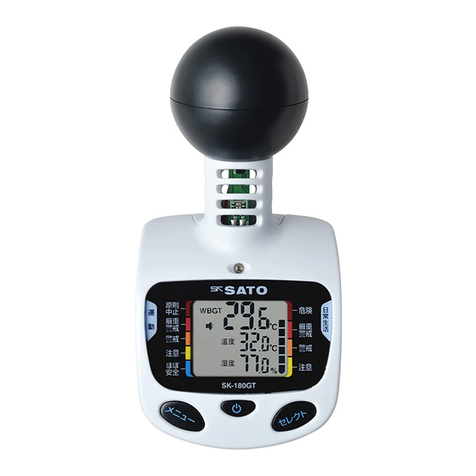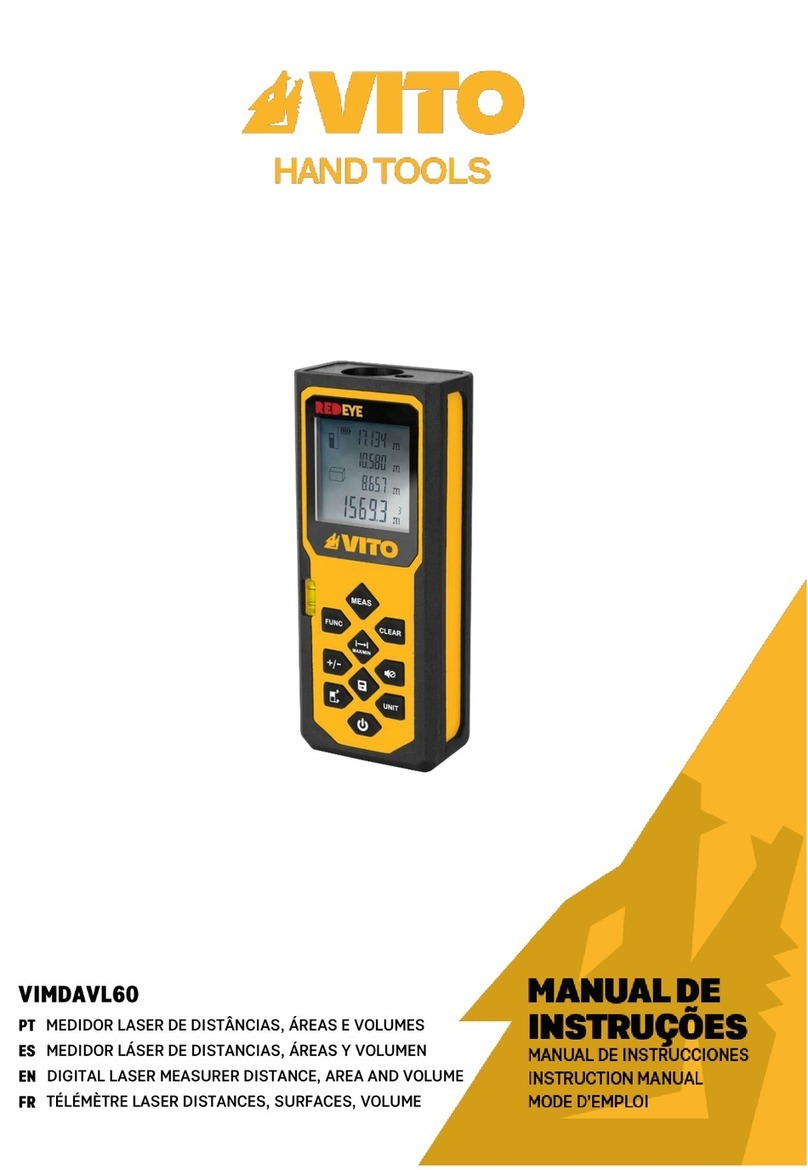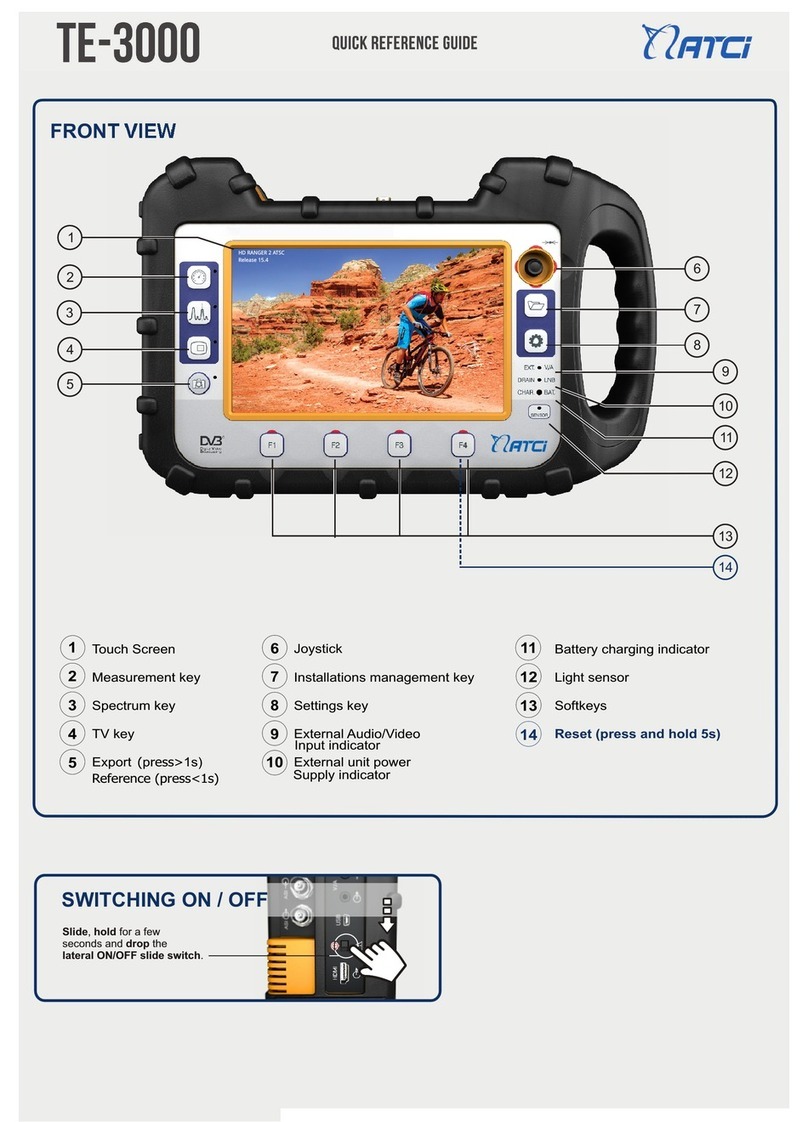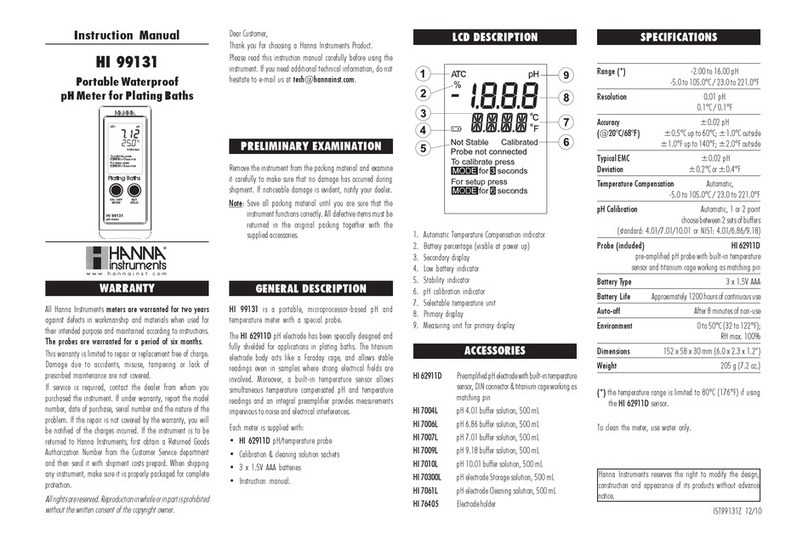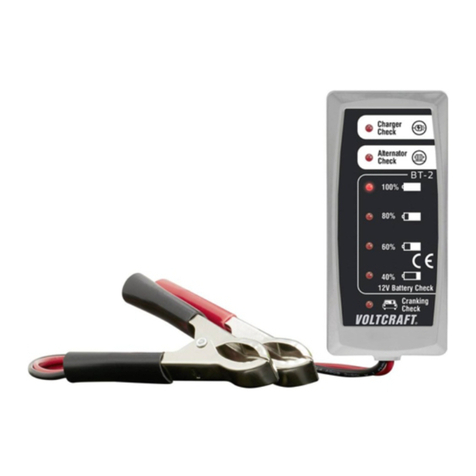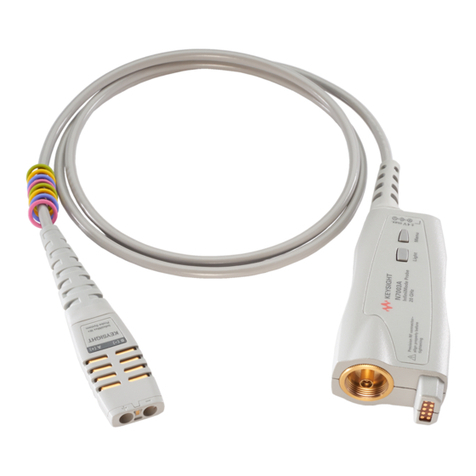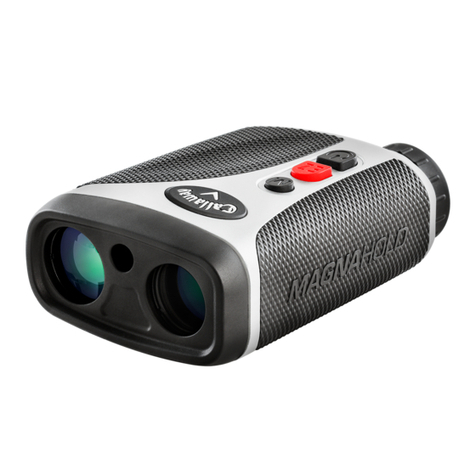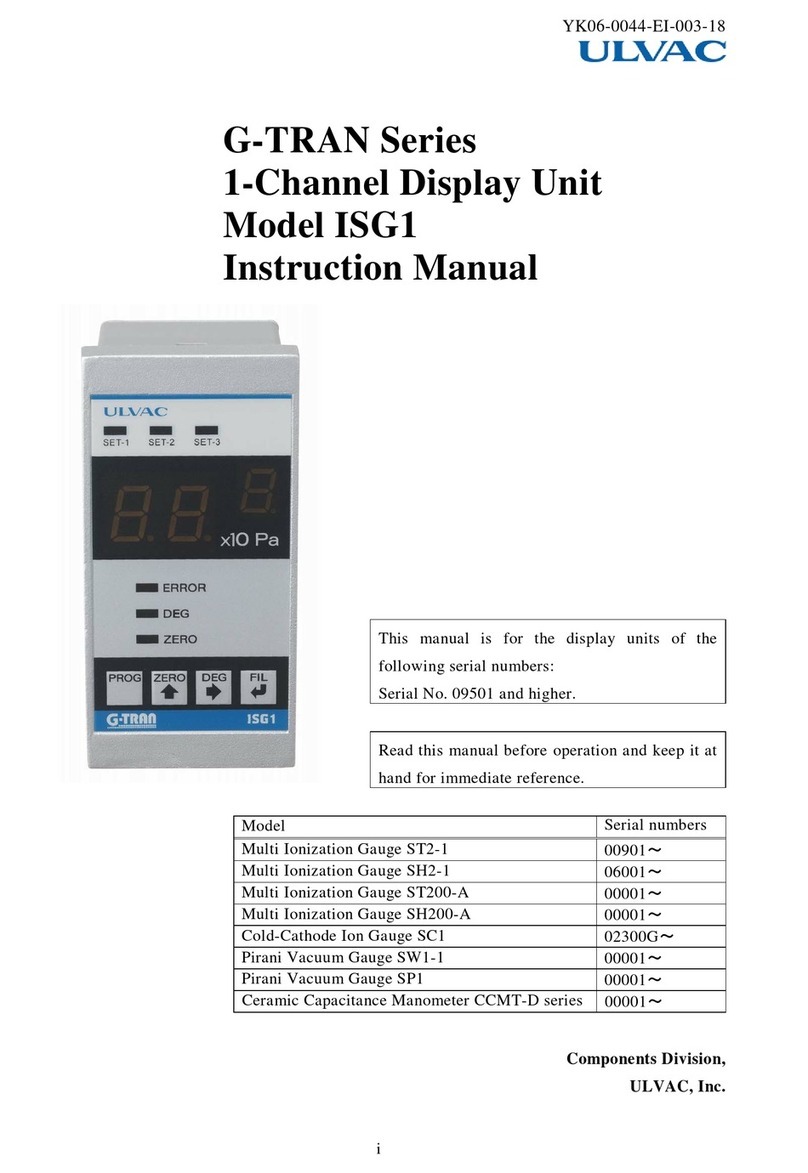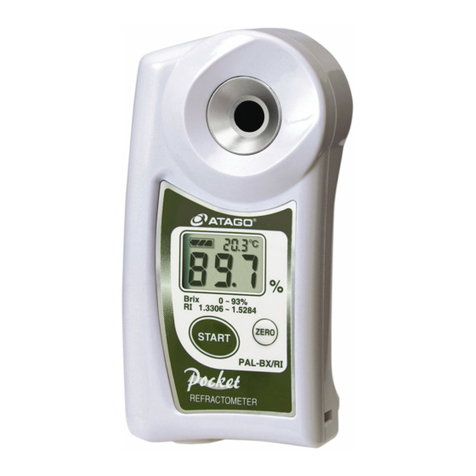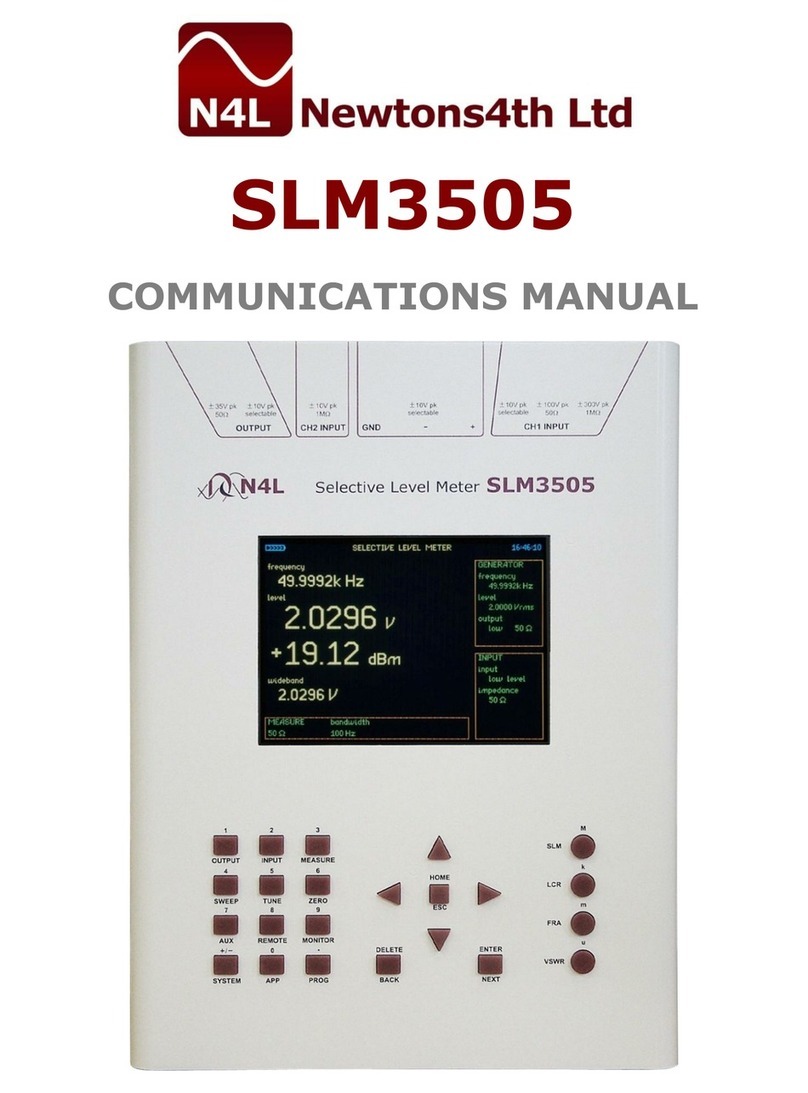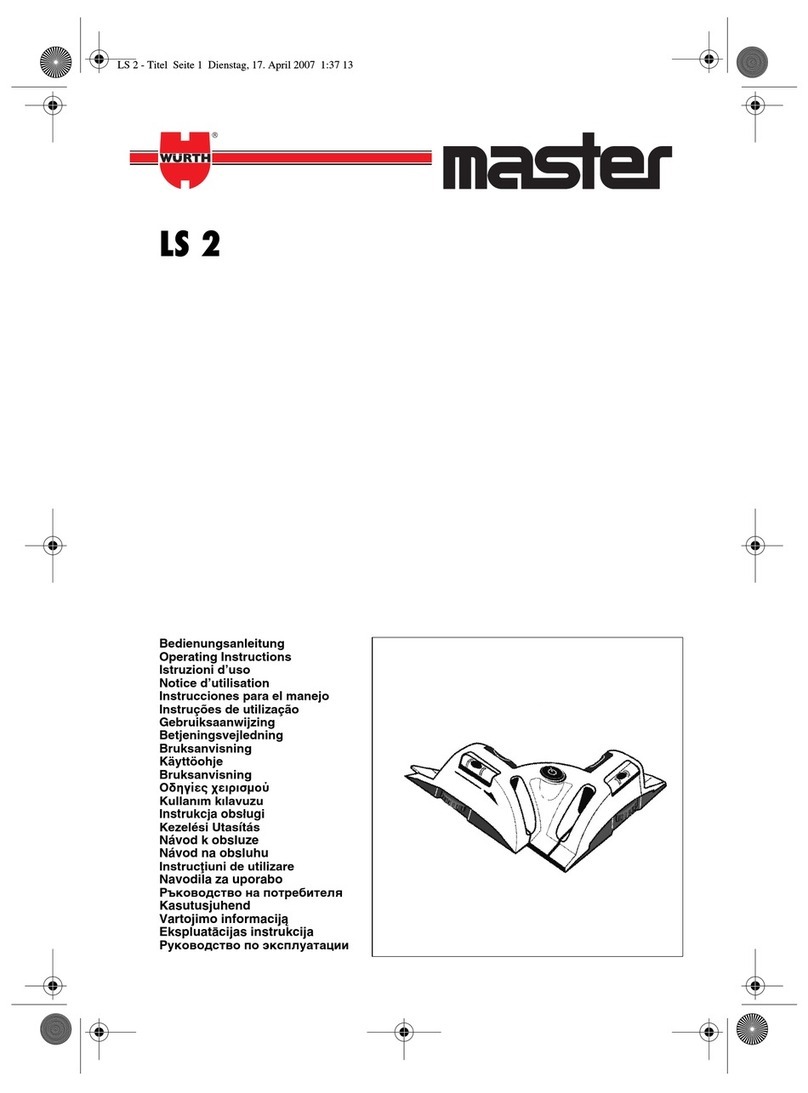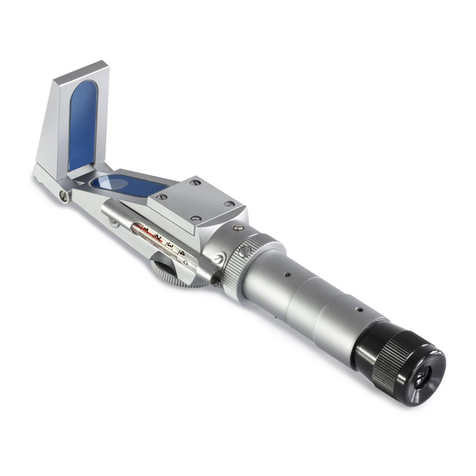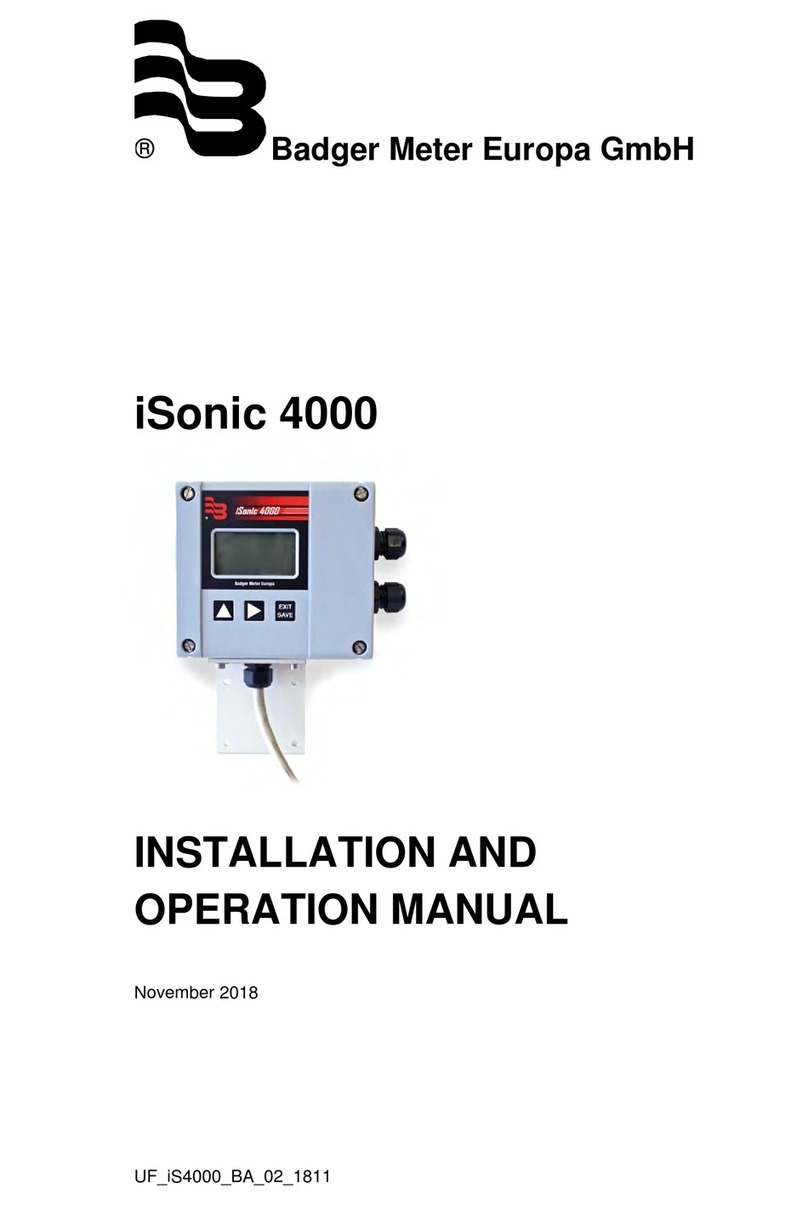SATO SK-10S User manual

SK-1110
Instruction Manual
No. 1731-00 Digital Salt Meter
Model SK-10S
No. 3 Nishi-Fukudacho, Kanda, Chiyodaku, Tokyo 101-0037 Japan
URL: http://www.sksato.co.jp/english/
M09

1
Cautions before use
A special treatment has been applied to the tip of the sensor. Never touch it with your bare hands.
Be sure not to drop it or let it bump against the container. If the sensor is hit against a hard object or
a strong impact is applied to it, its inner part could be damaged.
If the sample contains any conductive substance other than salt, an inaccurate measurement could
result due to the effect of such substance.
Keep them away from water or solution since the sensor unit (except the part to be directly inserted
into the sample) and the main unit are not waterproof. Otherwise, the unit may malfunction.
Notes
1. The unit can be used only to measure liquids.
The unit may display readings when used to measure solid matter, powder or gel matter, but the
readings are not necessarily correct.
When measuring, if the sensor touches any solid matter present in the sample, the measurement
values could be affected.
The readings may be unstable when the sample is flowing.
2. When there is a large temperature difference between the sample and the sensor
Measurement error may occur when there is a large temperature difference between the sample
and the sensor. To obtain accurate measurement, allow the sensor to adapt to the sample
temperature by immersing it in the sample for about 30 seconds.
The unit is designed to measure samples between −5 to 70°C. If the temperature falls outside
this range, "0 − L" appears and if the temperature exceeds the range, "0 − H" appears on the
display, indicating that measurement is disabled.
Avoid immersing the sensor into an extremely hot liquid. Doing so may cause a malfunction.
3. Measuring range
The measuring range for salinity concentration is 0.1 to 10.1%. Measuring a high-salinity solution is
largely affected by the sample temperature and sensor condition.
Since precise measurement of a high-salinity solution requires special expertise and equipment,
this unit should only be used for reference purposes.
Note that if the sensor is used for measuring a high-salinity solution, which consumes much
power, battery life is greatly shortened

2
Name of Section
Setting up the salt meter
1. Open the battery cover at the back of the main unit by sliding it in the direction of the arrow. Connect
the battery to the battery snap with the polarities (+/-) aligned correctly. Securely slide back the
battery cover.
The battery attached with the unit is for verifying operation. Therefore, the battery life may be
shorter. Before using the unit for the first time, install a new battery.
2. Remove the sensor protective tube from the sensor probe before using the unit.
Using the salt meter (measuring salinity concentration)
1. Turn on the unit by pressing the Power/Measure key on the main unit.
NB: The unit cannot be turned on with the Measure key on the sensor probe.
2. The display "CAL" appears for approximately one second. This indicates that the unit is now ready
for measurement.
Main body
Probe
Sensor protective tube
Select key
Average key
Change/OK key
Power/Measure
key (main body)
Measure key
Sensor grip

3
NB: If any other information appears at this point, it is likely that the sensing part is dirty. Wash the
tip of the sensor and wipe it off with a clean cloth or the like, and then press the Power/Measure
key again.
Washing the sensing part thoroughly before use will improve measurement accuracy. Always
wash the sensor before use especially when it is intended to be used for measuring high-salinity
solutions. (Refer to "Washing the sensor".)
3. Immerse the sensing part into the sample, and then press the Measure key on the probe (or press
the Power/Measure key on the main unit).
NB: If the tip of the probe is not immersed in the sample deep enough, accurate measurement may
not be achieved. Likewise, do not immerse the tip too deeply to avoid the possible
influence of the bottom of the container on the measurement values.
Use nonconductive containers such as glass, pottery and ceramic for accurate
measurement. Do not use Metal containers.
Calculating the average value
Stable measurement can be achieved by measuring several times and calculating the average value.
The unit calculates the average of up to nine measurements although it is possible to measure as many
times as needed.
Press the Average key after at least two measurements (no operation when pressed after one
measurement) to obtain the average value.
The display starts flashing and the average value appears together with [AVE] on the display.
The numerical value on the upper-right corner indicates the number of measurements performed.
The average value is rounded off to one decimal place and displayed.
Auto power-off function
The unit is equipped with an auto power-off function. This function turns off the unit if there is no
operation for about one minute.
The range of concentration measurement and gram equivalent are retained.
While measuring in intervals, the unit does not automatically turn off.
Warning for Low Battery
When the battery is exhausted, "LO-BAT" appears on the display. Replace the battery to new one.
Otherwise, operation will not be possible.

4
Displaying the gram equivalent (amount of solute)
The unit is equipped with a function that automatically calculates the salt content from the salinity
concentration in the solution. Automatic calculation uses the predetermined solvent amount. Since the
amount of solvent is retained even after the unit is turned off, it is useful to enter the usual amount into
the unit.
To use this function, first press the Select key to move the cursor (triangle arrow) to the [g (gram)]
position.
To change the solvent amount, press the Change/OK key to display the set amount.
The default (factory value) is set to 0.2 liter (200 cc). Press the [+] key (shared with the Average
key) to increase the amount and press the [−] key (shared with the Select key) to decrease the
amount. The amount range to be set is 0.1 to 100 liters.
Upon setting the amount, press the Change/OK key to confirm the setting.
Insert the sensor into the sample to be measured, and then press the Measure key. The unit to be
displayed is [g]
The averaging function cannot be used for the gram equivalent.
Measuring in intervals
The unit is equipped with an interval function. This function allows the user to start measuring at
predetermined time intervals, without pressing the Measure key each time.
The time interval to be set is between 1 to 60 seconds in 1-second steps and 60 minutes in 1-minute
steps.
To set the interval, press the Change/OK key while in the concentration measurement mode.
When the unit enters the interval setting mode, the value [0] should be displayed as the default.
Press the [+] key to increase the time and press the [−] key to decrease the time.
Press the Change/OK key again to start the interval measurement,.
Since the unit cannot be turned off automatically while interval measurement is under way, an
alarm is sounded to warn the user. A 1-second alarm sounds continuously regardless of the
interval time set.
To turn off the unit while in the interval mode, press the Measure key (on the main unit or sensor
probe). When the unit is turned on again, the interval measurement setting is enabled so that a
new interval measurement can be started immediately.
To cancel the interval measurement, use the Change/OK key to set the interval time to [0]
The averaging function cannot be used while in the interval measurement mode.

5
Care after use
Thoroughly wash the sensor after use.
If the unit is stored with sample solution adhering to it, a coating could form. This coating will
adversely affect the measuring values or cause a malfunction; thus, make sure to wash the sensor
after each use.
Washing the sensor
The sensor must be washed to keep it clean and functioning properly.
Wet a soft sponge with commercially available ordinary neutral detergent. When washing the
sensor, do not use any special solutions (alkaline or acid) or abrasives.
Gently wash the sensor by rubbing it with the sponge, then rinse thoroughly with clean tap water.
It is recommended not to wipe the sensor after washing; leave it to air dry.
After use, protect the sensing part by covering it with Sensor protective tube.
Specifications
Cat. No.
No. 1731-00 Digital Salt Meter
Model
SK-10S
Measuring factor
Salinity concentration
Detecting method
Electric resistance type
Measuring range
0.1 to 10.0% (at -5 to 70℃)
Accuracy
±0.1 at 0 to 1%, ±0.2 at 1% or more. ±0.3 at 2% or more
±0.5 at 3% or more, ±1.0 at 5% or more. ±1.5 at 8% or more
Functions
Average, Measuring in interval, Displaying gram equivalent.
Auto power-off, Low battery
Power requirement
One 9VDC battery (006P)
Consumption current
150mA (Max.)
Operation ambient
0 to 55℃, 20 to 80%rh (no condensing)
Dimensions
Main body: 62 (w) x 148 (H) x 24 (D)mm
Probe: 198 (L) x 16 (W) x 16 (D)mm
Cord length: 0.5m
Weight
145g (including a battery)
Accessories
One 9V battery (6F22 006P), carrying case
Table of contents
Other SATO Measuring Instrument manuals

SATO
SATO PC-7980GTI User manual

SATO
SATO SK-960A User manual

SATO
SATO SK-150GT User manual

SATO
SATO SK-940A User manual

SATO
SATO SK-110TRH Use and care manual

SATO
SATO SK-970A User manual

SATO
SATO SK-950A User manual
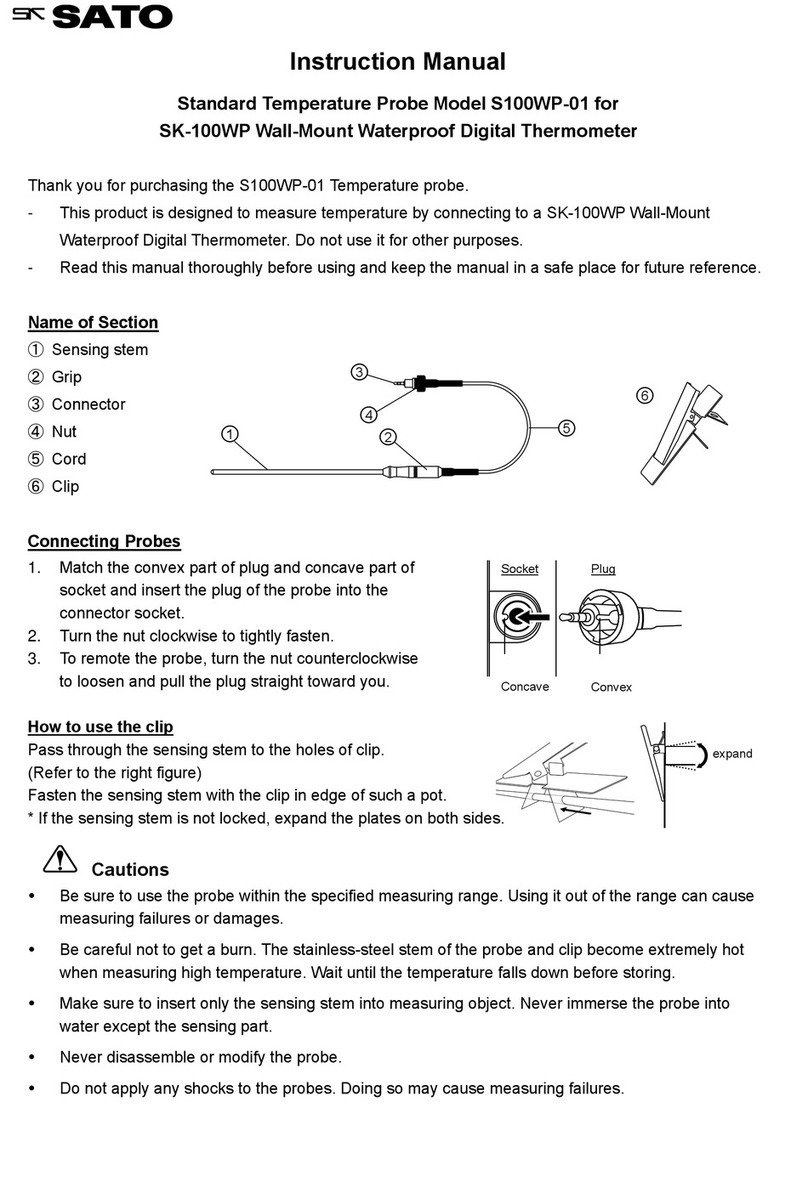
SATO
SATO S100WP-01 User manual
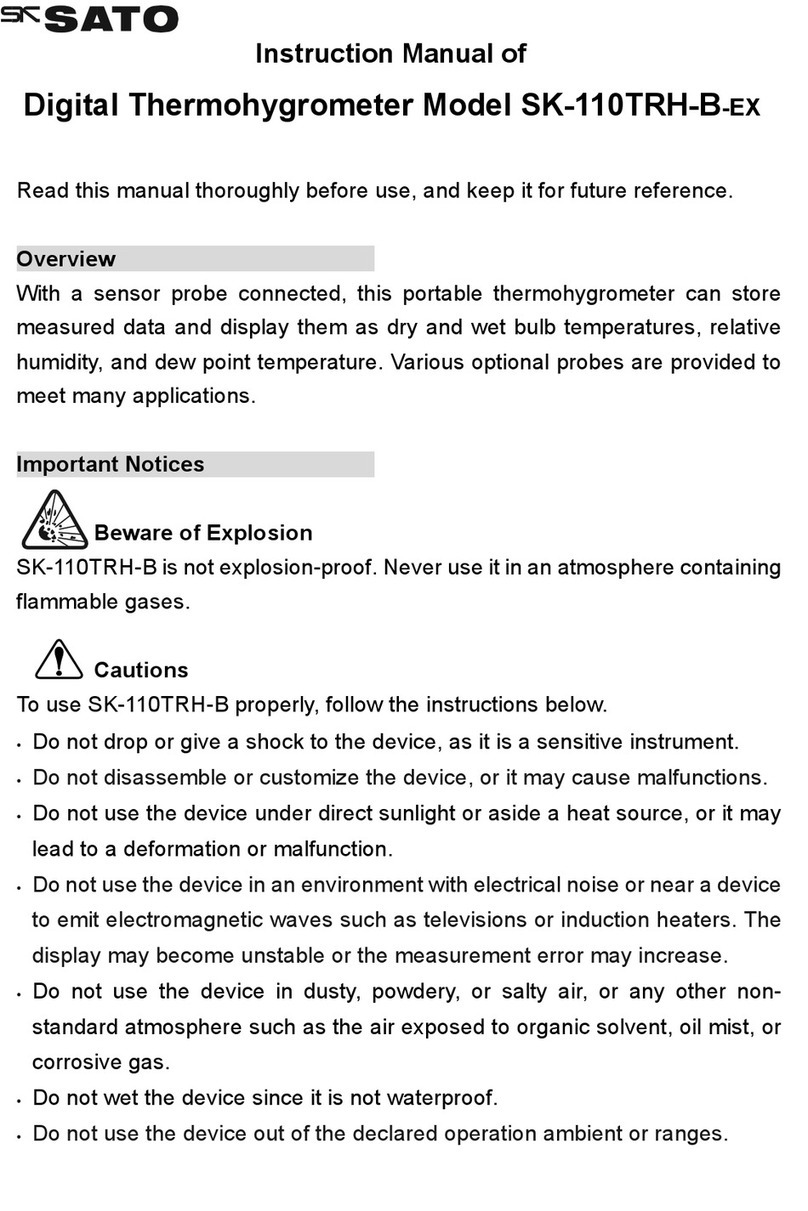
SATO
SATO SK-110TRH-B-EX User manual

SATO
SATO TH-100 User manual



